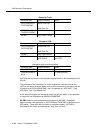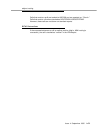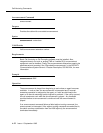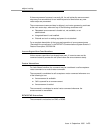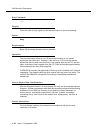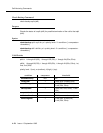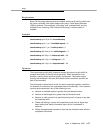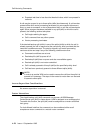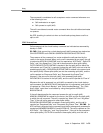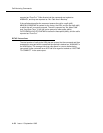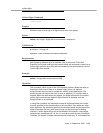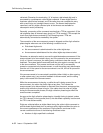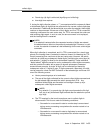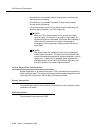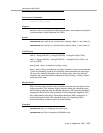
Call Vectoring Commands
A-28 Issue 4 September 1995
■ Expected wait time is
less than
the threshold value, which is expressed in
seconds.
A call may be queued to up to three splits (skills) simultaneously. A call remains
queued either until vector processing terminates (via a successful
disconnect,
busy
, or
route-to
command, or via an abandoned call) or until the call reaches an
agent. When an agent becomes available in any split (skill) to which the call is
queued, the following actions take place:
■ Call begins alerting the agent.
■ Call is removed from any other queues.
■ Vector processing terminates.
If the desired backup split (skills) is one of the splits (skills) to which the call is
already queued, the call is requeued at the new priority level, provided that the
command conditions are met. The step is skipped, and vector processing
continues at the next step if any of the following conditions are true:
■ Command conditions are not met.
■ Desired split’s (skill’s) queue is full.
■ Desired split (skill) has no queue and also no available agents.
■ Desired split (skill) is not vector-controlled.
■ Call is already queued to this split (skill) at the specified priority level.
■ Call has been previously queued to three different splits (skills).
NOTE:
A
route-to
to another VDN can be used to remove the call from the splits it is
queued to if necessary. The steps in the routed-to vector then can be used
to queue to other splits.
Answer Supervision Considerations
No answer supervision is returned.
Feature Interactions
The
check-backup split (skill)
command can access a AUDIX/Message
Center/Server split (skill) in cases where a VDN is assigned as a coverage point.
To enable this function, the split (skill) must be assigned as a vector-controlled
hunt group.
For Look-Ahead Interflow, the command can be considered either a call
acceptance vector command or a neutral vector command.



